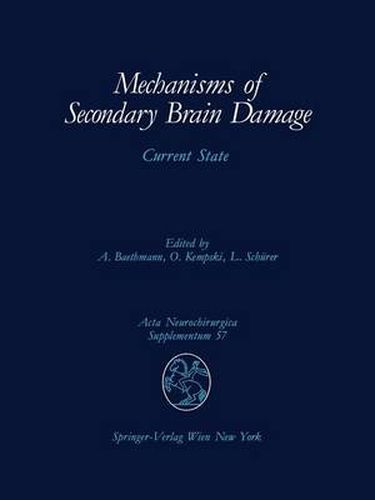Readings Newsletter
Become a Readings Member to make your shopping experience even easier.
Sign in or sign up for free!
You’re not far away from qualifying for FREE standard shipping within Australia
You’ve qualified for FREE standard shipping within Australia
The cart is loading…






This title is printed to order. This book may have been self-published. If so, we cannot guarantee the quality of the content. In the main most books will have gone through the editing process however some may not. We therefore suggest that you be aware of this before ordering this book. If in doubt check either the author or publisher’s details as we are unable to accept any returns unless they are faulty. Please contact us if you have any questions.
Great progress has been made in the understanding and prevention of secondary brain damage from acute cerebral disorders, such as trauma and ischemia. Advances may be concerned in particular with better organization and logistics of preclinical emergency care, including rapid arrival of well-trained medical staff on the scene of an accident and of transportation to a competent hospital. Nevertheless, it is a safe assumption that development of secondary brain damage from both intra- and extracranial causes still represents a major factor for the final outcome in severe head injury. Thus, exchanges of experiences and information between various disciplines involved with this important clinical problem - trauma still assumes the number one position as a cause of morbidity and mortality up to an age of 45 years - may provide a basis for in-depth analysis of remaining problems as well as of methods of their solution. This exactly is the purpose of the present publication on concepts and findings pertinent for the general subject of secondary brain damage from various experimental as well as clinical viewpoints. An internationally high-ranking group of experts has been contributing to this collection of reviews on cerebral trauma and ischemia and its adverse sequelae, including cerebral exploration by most modern technologies, such as NMR spectroscopy or PET scanning, among others.
$9.00 standard shipping within Australia
FREE standard shipping within Australia for orders over $100.00
Express & International shipping calculated at checkout
This title is printed to order. This book may have been self-published. If so, we cannot guarantee the quality of the content. In the main most books will have gone through the editing process however some may not. We therefore suggest that you be aware of this before ordering this book. If in doubt check either the author or publisher’s details as we are unable to accept any returns unless they are faulty. Please contact us if you have any questions.
Great progress has been made in the understanding and prevention of secondary brain damage from acute cerebral disorders, such as trauma and ischemia. Advances may be concerned in particular with better organization and logistics of preclinical emergency care, including rapid arrival of well-trained medical staff on the scene of an accident and of transportation to a competent hospital. Nevertheless, it is a safe assumption that development of secondary brain damage from both intra- and extracranial causes still represents a major factor for the final outcome in severe head injury. Thus, exchanges of experiences and information between various disciplines involved with this important clinical problem - trauma still assumes the number one position as a cause of morbidity and mortality up to an age of 45 years - may provide a basis for in-depth analysis of remaining problems as well as of methods of their solution. This exactly is the purpose of the present publication on concepts and findings pertinent for the general subject of secondary brain damage from various experimental as well as clinical viewpoints. An internationally high-ranking group of experts has been contributing to this collection of reviews on cerebral trauma and ischemia and its adverse sequelae, including cerebral exploration by most modern technologies, such as NMR spectroscopy or PET scanning, among others.